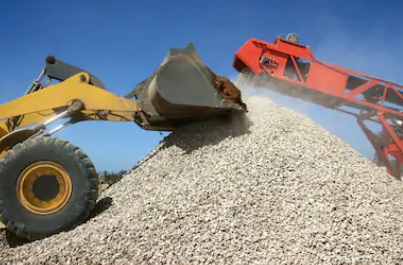COCHRANE— A gravel pit expansion proposal in Rocky View County has stakeholders and environmentalists concerned about the possibility of leaching heavy metals and other harmful materials into the Bow River.
BURNCO currently operates a gravel pit northwest of Cochrane that is roughly 61 hectares in size and contains an estimated 2.5 million tonnes of aggerates. The site was permitted in 2012 with a design capacity of 500,000 tonnes a year.
BURNCO is now proposing to increase the overall size of the operation to 452 hectares by acquiring adjacent land parcels containing an estimated 15 million tonnes of gravel.
Once fully developed, the project would span roughly a six-kilometre stretch along the Bow River.
With a design capacity expected to output 500,000 tonnes per year, BURNCO’s master site development plan estimates the project will be in operation for 30 to 35 years.
The details in the development plan also include a proposal to wash the gravel on site.
The master site development plan indicates that gravel mining operations will include six-metre setbacks from wetland areas, 30-metre setbacks from riparian areas, 60-metre setbacks from the Bow River and Grand Valley Creek and 30-metre setbacks from all other watercourses in the project area.
Hydrologist and geologist Dr. Jon Fennell said he is deeply concerned by the proposition of removing such a vast amount of gravel and sand, which acts as a natural filter for water moving underground, from an area so close to the Bow River.
“This is a unique situation. It is an extremely large development. Not only is it going be a blight to the picturesque drive out on the 1A to the mountains, with permanent disruption, but it’s also going to alter the local water balance in that area. You’ve got all of this gravel that’s going to be taken away, with maybe a thin veneer would be left, maybe a metre or two would be left, so all of that filtering ability would be removed,” he said.
Fennell was commissioned to conduct an experiment to see what he could find in the aggregate material from BURNCO’s proposed site.
He filled a metre-long PVC pipe with the aggregate material, sand and gravel, placed a filter on the bottom and poured non-ionized laboratory-grade water through it.
“It’s kind of like mimicking rainfall or snow melt moving through a metre, a metre and point two-five, thickness of sand and gravel. I wanted to see what’s coming out of the bottom because what’s coming out the bottom would theoretically be what’s going into the bedrock, and the bedrock doesn’t have a lot of filtering ability because it’s fractured,” he said.
Fennell said he saw two concerning results from the test.
The first was a large amount of sediment in the water, which has the potential to wash into the Bow River and cover underwater nests of the aquatic inhabitants, suffocating and ultimately killing their eggs.
The second result, he said, was an alarming collection of chemicals in the effluent.
“Along with the turbidity there were constituents like arsenic, chromium, cobalt, mercury, lead,” he said.
Fennell said the concentrations of those chemicals in the water were compared against standards like the Alberta Tier 1 Soil and Groundwater Guidelines, Alberta’s Water Quality Guideline for the Protection of Aquatic Life and Health Canada’s drinking water guidelines.
“A number of those metals and trace elements were well in excess of the criteria for maximum acceptable concentrations to protect human and aquatic health,” he said.
Fennell said the current setbacks in place are not nearly enough to ensure that these substances are filtered out by the ground before potentially entering the Bow River, which is the natural discharge point for the majority of the groundwater in the area.
“It should be more like a kilometre or more so that the water has time to cleanse itself before it gets into the environment,” he said.
Fennell clarified that he is not opposed to industrial activity, but wants to see it done in a responsible manner.
“What we’re potentially ending up with is an unintended consequence that someone else is going to have to deal with, or BURNCO is going to have to figure out what they’re going to have to do to mitigate it, and that can be very difficult after the fact,” he said. “What we’re saying is why don’t you look at this now before you create something like that.”
Fennell said he feels that the province needs to reassess its policies and processes for assessing these types of developments when they fall into environmentally sensitive areas.
“A gravel pit in one place is not the same as another. You can’t treat them the same, but they’re being assessed the same,” he said. “We need to change the system a bit, so that it’s more rigorous, more fair, more well thought out. We need a plan; we need a developmental plan. We should have areas that are no-go, no development because it’s important for the environment. These setbacks of 30 or 60 metres, it’s not good enough.”
Rocky View County Council will be holding a public hearing on BURNCO’s proposal on July 6 at 9 a.m.
The public is encouraged to voice their opinions on the project and must send a written submission by Wednesday (June 23) at 4:30 p.m., or an audio/video submission by 12:00 p.m. on July 5.
You can email your submissions to [email protected] and must include BYLAW C-8073-2020 in the subject line.
For more details visit rockyview.ca/.
MLA Peter Guthrie and BURNCO were contacted for comment by The Cochrane Eagle, but did not respond before the time of publication.




